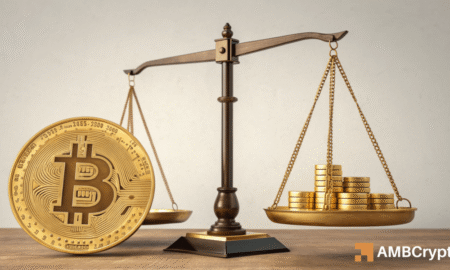The Rise of Stablecoins: A Game-Changer in the Digital Asset Landscape
Stablecoins are increasingly capturing attention, particularly following significant developments surrounding regulatory frameworks in the United States and Hong Kong. The recent signing of the U.S. GENIUS Act has positioned stablecoins at the forefront of institutional investment, leading to a remarkable surge of over $3.4 billion in just one week. With more institutional players showing interest, it’s clear that stablecoins are not just a passing trend but an integral part of the evolving financial ecosystem.
The U.S. market’s landscape is shifting due to the GENIUS Act, signed on July 18, which aims to legitimize dollar-backed digital assets. This piece of legislation has spurred a 1.32% rise in total market capitalization for stablecoins, bringing it close to $266 billion, according to DeFiLlama data. Its dual chartering system and monthly attestations introduce robust compliance mechanisms that facilitate both institutional and retail user confidence. With major firms like Circle and Paxos poised to benefit from these changes, the stablecoin sector is expected to flourish amid a backdrop of evolving regulations.
Hong Kong is making waves in the stablecoin space with its new Stablecoin Ordinance set to launch on August 1. This legislation signals a clear intention to create a safe and compliant environment for stablecoin operations. Over 50 firms are reportedly vying for licenses, despite strict compliance requirements. This influx reflects an eagerness to participate in a regulated market that promises both security and growth opportunities. However, would-be issuers must prepare for rigorous scrutiny as regulators aim to ensure that only compliant projects gain traction.
The U.S. GENIUS Act is not only about regulatory compliance but also a roadmap for how stablecoins will integrate into the mainstream financial sector. The legislation outlines pathways for bank-issued stablecoins, bridging conventional banking with digital asset markets. This fusion could redefine existing financial norms by offering secure transactions, reduced volatility, and efficient cross-border transfers. With the backing of established institutions, stablecoins can provide the stability that many investors seek in the increasingly volatile world of cryptocurrencies.
Moreover, regulatory clarity presents various advantages, including heightened institutional confidence and increased retail adoption. As more regulations come into play, stablecoins may emerge as a critical tool for hedging risks and facilitating seamless transactions. Institutions looking for ways to engage with cryptocurrencies can leverage stablecoins to navigate market volatility. This increasing adoption will create a ripple effect across the financial landscape, paving the way for broader acceptance of digital currencies.
In summary, the rapid growth of stablecoins reflects a broader trend toward mainstream acceptance of digital assets. The legislative framework provided by the GENIUS Act in the U.S. and the forthcoming Stablecoin Ordinance in Hong Kong are fostering an environment ripe for innovation. As these frameworks evolve, the stablecoin market is likely to attract further institutional investment, thus enhancing its legitimacy. The future appears vibrant for stablecoins, offering a compelling blend of stability, regulatory assurance, and innovative financial solutions.
















